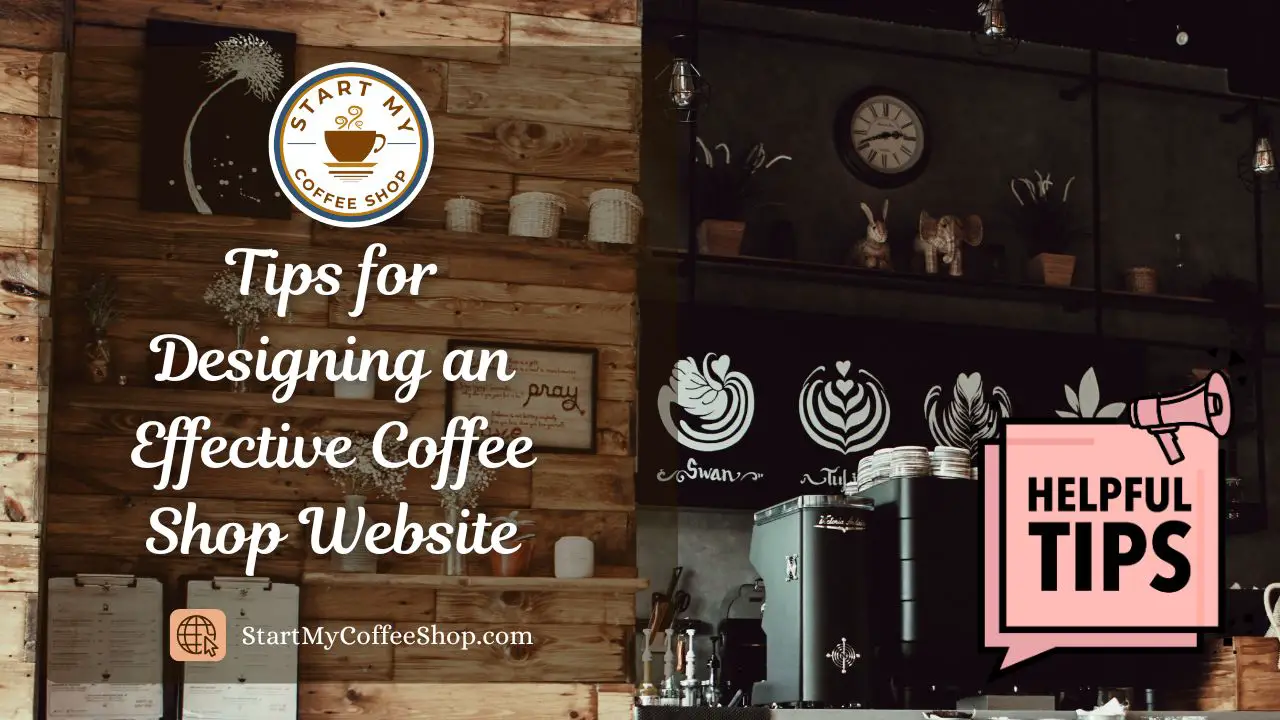If you are interested in starting a coffee shop, you may be wondering how long it will take for your new business to start making a profit. In truth, many factors will determine how long it will take to reach profitability, and below I have listed the top 5 factors that will determine the profitability of your coffee shop and details on how to increase your profits.
Throughout this article, I will answer one of the most important questions you will ask when starting up your new business: “How long does it take for a coffee shop to become profitable?”
On average, it takes 2-3 years for a small business to reach profitability, although the time it will take for a coffee shop to reach profitability is dependant on these 5 factors:
-
Startup Costs
-
Fixed Operating Costs
-
Variable Operating Costs
-
Total Revenue
-
Break-even Point
While the average owner profits anywhere from $60,000 to $160,000 annually from their coffee shop, by following the steps listed in this article, you will have a better understanding of how quickly you can make a profit, as well as how to maximize your potential profit.
1. Startup Costs

Depending on the size of your coffee shop, startup costs do vary, however, the average startup costs of a small sit-in-style coffee shop can range from $40,000 to $200,000, while the costs of a large sit-in-style coffee shop can range from $75,000 to $300,000.
As an initial investment into your new business, these numbers may look daunting, although the main factors that will determine the specific startup costs of your coffee shop are the location of your business, the layout, and interior design, as well as your menu, which will ultimately determine the equipment you will need to operate.
The location of your coffee shop is a huge factor in the initial startup costs of your business, whether you decide to lease a building or buy your own. Buying a building is undoubtedly the more expensive option in regards to your initial startup costs, however, when leasing, the rent is calculated by the size of your building, which can be easily compared between potential locations, and will directly affect the cost of the security deposit required by the property manager.
Customizing the layout and interior design of your building will also greatly affect your startup costs due to any remodeling or additions needed, painting required, as well as any furnishings to complete the look of your coffee shop.
While it is possible to find a building that doesn’t require any remodeling or additional counter space, it is important to remember that the cost of any furniture or decorations you buy will be included in your initial startup costs.
Deciding on your menu early on will also directly affect your startup costs because your menu will ultimately determine the equipment you will need to operate your coffee shop, which can either be purchased up-front or on a lease through certain wholesalers like Kaldi.
The equipment you require may be items such as espresso makers, coffee grinders and brewers, or ice-makers but could also include items such as pitchers, blenders, and even display cases. The costs of these items will vary depending on the manufacturer, however, commercial coffee makers can cost around $300, an espresso machine can cost anywhere from $3,000 to $20,000, and some industrial coffee grinders cost up to $1000.
While some of these startup costs must be paid upfront, such as the security deposit on your building or equipment, some of these costs can be broken down further into fixed-type and variable-type operational costs, which also greatly affect your profitability.
Example List of Startup Costs:
Security Deposit on Building – $4,000
Espresso Machine – $13,000
Coffee Maker – $300
Coffee Grinder – $700
OR
Security Deposit for Equipment – $2,000 (10% of the total cost of the equipment.)
2. Fixed Operating Costs
Once you have determined your initial expenses due to your location and equipment, you may notice that some of these startup costs will be paid over some time instead of upfront, these expenses are your fixed-type operating costs.
Rent is a very common example of a fixed-type operating cost, as your rent will stay the same throughout the entirety of your lease, however, if you lease your equipment, this will require a monthly payment as well.
Another great example of a fixed-type operational cost is the payments for the insurance required to run your coffee shop, although these rates will vary by company and the different types of insurance you will need.
Insurance requirements will vary by state, but the most common types of insurance for a coffee shop are general liability insurance, property insurance, and equipment breakdown insurance coverage. Depending on the location and type of coffee shop you own, you may even qualify to receive business income coverage to maintain the ability to pay these expenses.
While each of these costs will vary depending on your specific coffee shop, it is important to keep a list of these expenses, as they will play an important role in your profitability later on.
Example List of Fixed-type Operating Costs:
Building Rent/Lease – $2,000/month
Equipment Lease – $200/month
Insurance – $250/month
Loan Interest – $300/month
Total Fixed-type Operating Costs – $2,750
3. Variable Operating Costs

Now that you have a list of your fixed-type operational costs, the next thing to add to that list is your variable-type operational costs, which are the expenses that will fluctuate as your business grows, such as utility bills, inventory expenses, or the cost of labor for your employees.
Utility bills will fluctuate each month regardless if your business is becoming more successful or not, however, as your business becomes more profitable, your utilities will become more expensive per month because you will use more of these utilities as you begin to serve more customers!
In a coffee shop, there is no greater variable than your inventory, and there is no exception in the costs associated with it. From the types of beans, you use to the cups and napkins, each of these items factor into your inventory.
Just as with your utilities, as your coffee shop becomes more profitable as you start to serve more customers, these variable-type costs will increase as well because you will use more supplies to serve the increased amount of customers.
Labor costs are another great variable, which will also depend on your specific coffee shop, and what you can afford to pay your employees. These expenses may fluctuate each week, depending on your needs but, as always, as you become more profitable and able to serve more people, you will need to increase the number of hours your employees will work.
Example List of Variable-type Operating Costs:
Labor – $1,500/month
Coffee – $500/month
Baked goods – $300/month
Supplies – $250/month
Total Variable-type Operating Costs – $2,550
4. Total Revenue
Now that you have created a list of all of your expenditures, it’s time to focus on the most important factor of your profitability: the total amount of daily, weekly, and monthly revenue of your coffee shop.
Your total revenue can be determined by multiplying your average amount of sales by the average receipt total of those sales. But, as a new owner that hasn’t opened your business yet, how can you determine these numbers?
According to a survey conducted by the National Coffee Association, the average independent coffee shop sells between 200-300 items per day, and since you have previously decided on your menu, you can calculate an estimated price for each item you offer to help determine an average receipt total.
On average, customers will pay approximately $2.99 per cup of coffee, and while prices of your pastries or baked goods may vary depending on your expenses for those items, let’s say you sell muffins for $4.
Given these estimated prices, as well as an average of 200 sales per day, you could determine that you can make a total of $598 from daily coffee sales, approximately $998 if half of the customers purchase a muffin with their coffee, or up to $1,398 if each customer purchases both a coffee and a muffin.
By using this example, with a daily revenue total of $998 you can determine that your average receipt total is $4.99, and with your total revenue being the product of your average amount of sales multiplied by your average receipt price, you can calculate your total monthly revenue to be approximately $29,940 for a full 30 days.
Find out how much you will make in sales in the first year HERE!
5. Break-even Point
Now that you have an estimate of your monthly revenue, as well as your list of monthly expenses, you can calculate the amount of revenue you require to break even, and by using this number you can also determine how much revenue you require to become profitable.
To find your break-even point for your coffee shop you must first find your gross margin percentage and divide that number by your fixed-type costs. To find your gross margin percentage, you must subtract the cost of an item by your sale price of that item, then divide that total by the sale price.
By calculating your break-even point, you will know exactly how many sales per day are required to reach this point, as well as be able to estimate how many sales will be required per day to reach profitability.
For example:
Gross Margin:
$2.99 sale price for one coffee – $0.85 cost of supplies = $2.14 gross margin.
Gross Margin Percentage:
$2.14 / $2.99 =72% Gross Margin
The total amount of fixed-type costs from section 2 – $5,250 per month, or $175 per day.
Break-Even Point:
$5,250 / 72% = $7,792 in monthly coffee sales or $175 / 72% = $243 in daily coffee sales required to break even.
Dividing the number of daily sales required by the price of the item purchased will determine how many items you need to sell per day to break even.
In the example above, $243 is the daily break-even point, dividing this number by $2.99 per coffee will equal an approximate total of 82 required coffee sales per day to break even.
For the monthly break-even point of this example, $7,792 is the monthly break-even point, dividing by $2.99 per coffee, which equals approximately 2,606 required coffee sales per month to break even.
Using this formula, you can enter your exact expense and revenue values to find your specific break-even point for your coffee shop, which, in turn, will allow you to determine how many sales you require to reach profitability.
There are a limited amount of ways to increase the profitability of your coffee shop which include acquiring more customers, up-selling your products, raising the prices of your products, or implementing cost restructuring initiatives to reduce your operational expenses, such as switching to cheaper vendors or by reducing hours during known slow periods.
While the time it will take each business to reach profitability will vary, by following this list of examples, you can ensure that you are taking the correct steps to reach profitability while also maximizing the amount of your potential profit!
Frequently Asked Questions
On average, a small to the medium-sized coffee shop can earn anywhere from $60,000 – $160,000 in profit annually for the owner.
While the price of a cup of coffee may vary depending on the type of coffee, on average a customer will pay approximately $2.99 per cup.
While startup costs will differ depending on location, size of the building, as well as equipment needs, the startup costs of a sit-down-style coffee shop can fall anywhere between $40,000 – $350,000 on average.
To learn more on how to start your own coffee shop checkout my startup documents here
Please note: This blog post is for educational purposes only and does not constitute legal advice. Please consult a legal expert to address your specific needs.

Hi! I’m Shawn Chun
My adventure in coffee began when I first launched my first coffee shop back in the early 2000s. I had to figure out so many things on my own and to make it worse within 2 years of opening two large corporate coffee chains moved in just blocks away from me!
As I saw smaller and even some larger coffee shops in the neighborhood slowly lose customers to these giant coffee chains and slowly close up shop, I knew that I had to start getting creative…or go out of business.
I (like you may be) knew the coffee industry well. I could make the best latte art around and the foam on my caps was the fluffiest you have ever seen. I even had the best state-of-the-art 2 group digital Nuova Simonelli machine money could buy. But I knew that these things alone would not be enough to lure customers away from the name brand established coffee shops.
Eventually, through lots of trial and error as well as perseverance and creativity I did find a way to not only survive but also thrive in the coffee/espresso industry even while those corporate coffee chains stayed put. During those years I learned to adapt and always faced new challenges. It was not always easy, however, in the end, I was the sole survivor independent coffee shop within a 10-mile radius of my location. Just two corporate coffee chains and I were left after that year. All told the corporate coffee chains took down over 15 small independent coffee shops and kiosks and I was the last one standing and thriving.
Along the years I meet others with the same passion for coffee and I quickly learned that it is not only “how good a barista is” that makes a coffee shop successful, but the business side of coffee as well.
Hence why I started this website you are on now. To provide the tools and resources for up and coming coffee shop owners to gain that vital insight and knowledge on how to start a coffee shop successfully.
Stick around, browse through my helpful blog and resources and enjoy your stay! With lots of LATTE LOVE!
Shawn






